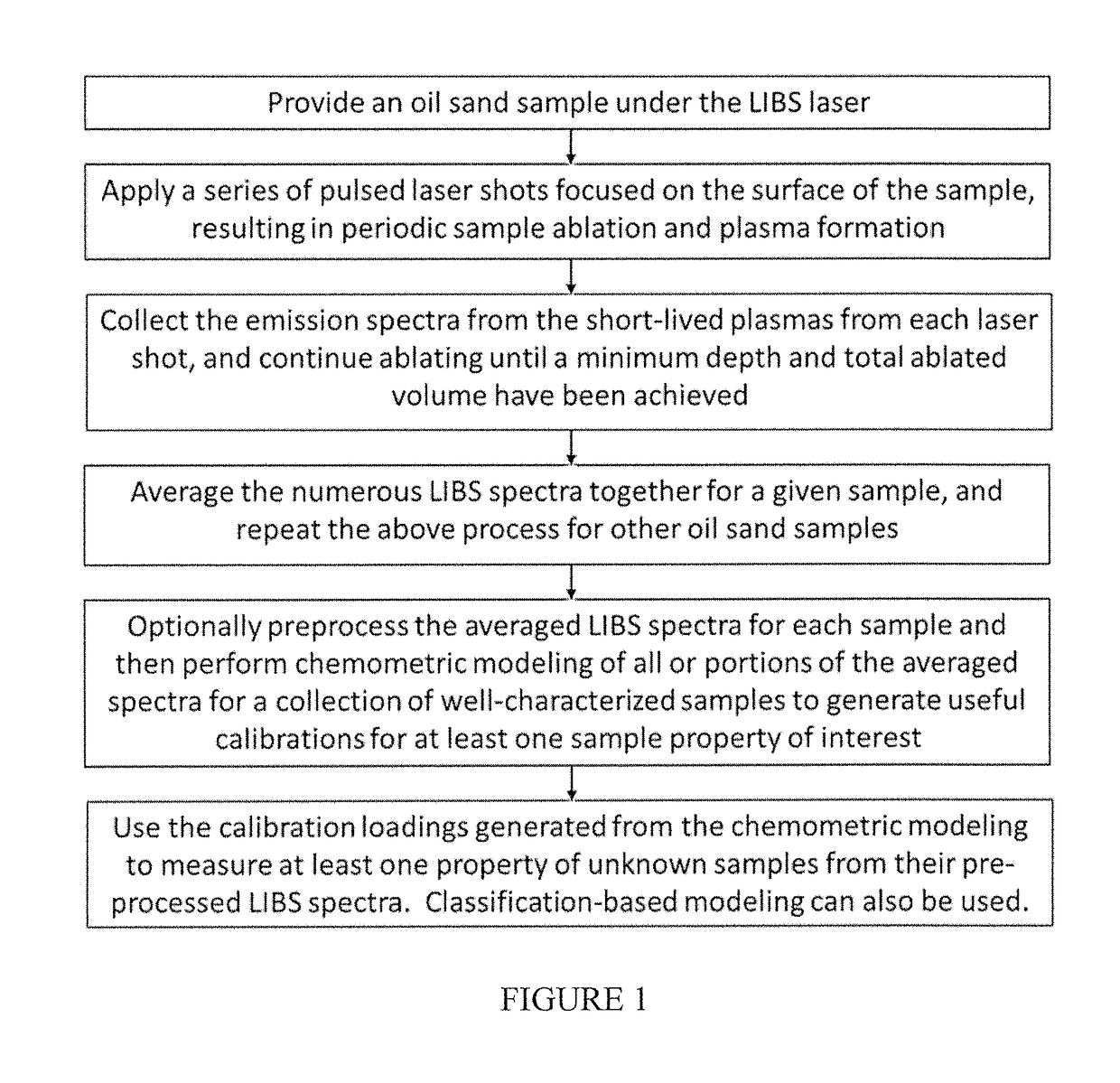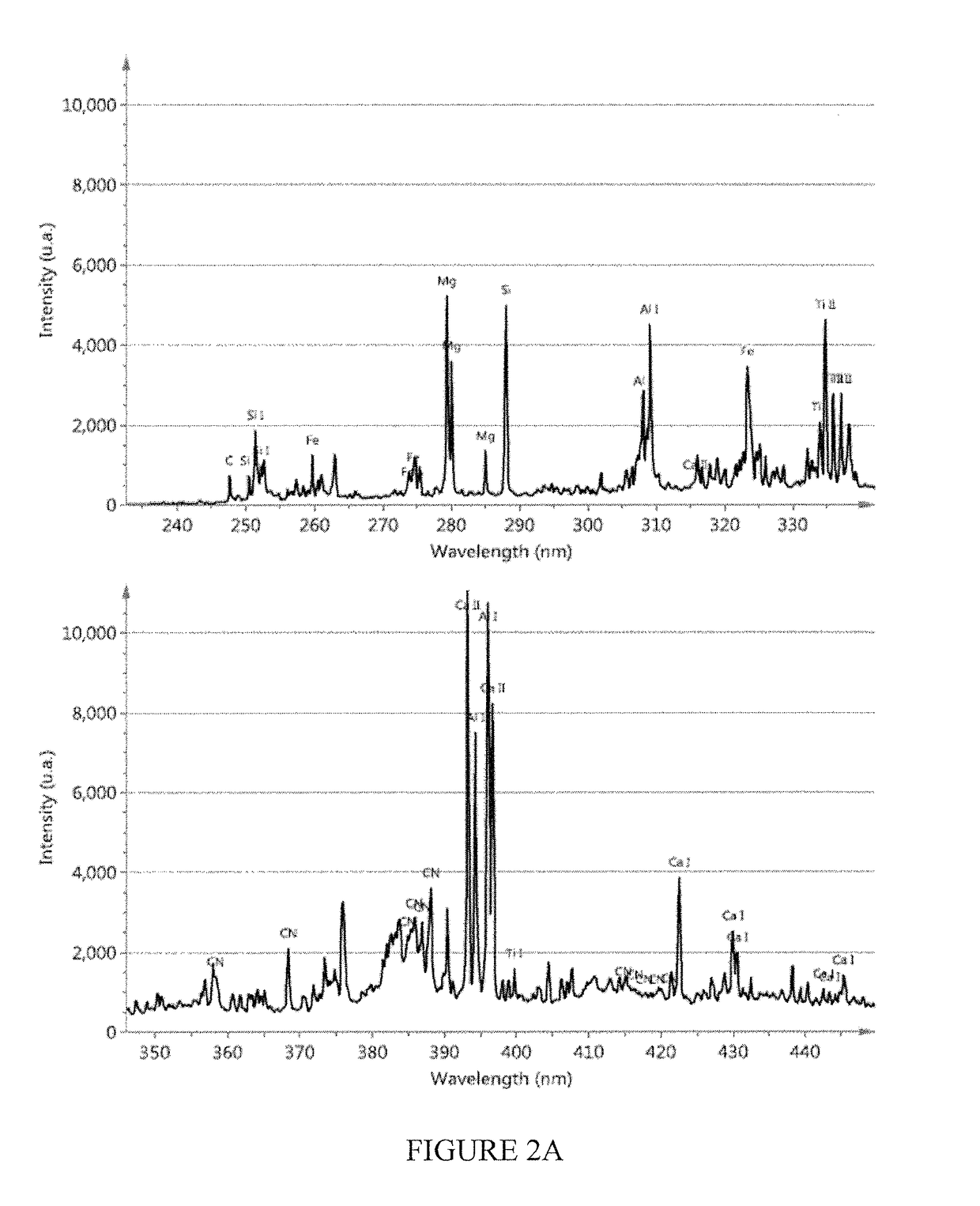Laser-induced breakdown spectroscopy of oil sands
a technology of oil sand and breakdown spectroscopy, which is applied in the direction of spectrum investigation, instruments, material analysis, etc., can solve the problems of inability to complete the extraction of bitumen from solids in time, difficulty in sand ore samples, and high cost, so as to reduce the cost and analysis time
- Summary
- Abstract
- Description
- Claims
- Application Information
AI Technical Summary
Benefits of technology
Problems solved by technology
Method used
Image
Examples
examples
[0095]The following examples describe exemplary embodiments of the invention, and are not intended to limit the claimed invention.
Ablation Configuration
[0096]The LIBS probe comprised a Q-switched Nd:YAG laser CFR 200 (Quantel) that can deliver up to 300 mJ per pulse at a wavelength of 1064 nm. The pulse duration was about 9 ns FWHM at a repetition rate is 5 Hz. The laser energy was adjusted to about 125 mJ. Under these conditions, the estimated spot diameter on the surface of the samples was about 600 am, which yields a laser fluence of about 40 J / cm2. The light emitted by the plasma passed through the center of a dichroic mirror positioned next to the plasma expansion direction and was then focused onto the entrance of an optical fiber bundle by an achromatic lens. The optical fiber bundle (comprising 14 individual fibers of 100 am core diameter), which guides the light break out into two legs (7 aligned optical fiber each) at the end. The two outputs were connected to the two entr...
PUM
| Property | Measurement | Unit |
|---|---|---|
| volume | aaaaa | aaaaa |
| particle size | aaaaa | aaaaa |
| angle | aaaaa | aaaaa |
Abstract
Description
Claims
Application Information
 Login to View More
Login to View More - R&D
- Intellectual Property
- Life Sciences
- Materials
- Tech Scout
- Unparalleled Data Quality
- Higher Quality Content
- 60% Fewer Hallucinations
Browse by: Latest US Patents, China's latest patents, Technical Efficacy Thesaurus, Application Domain, Technology Topic, Popular Technical Reports.
© 2025 PatSnap. All rights reserved.Legal|Privacy policy|Modern Slavery Act Transparency Statement|Sitemap|About US| Contact US: help@patsnap.com



